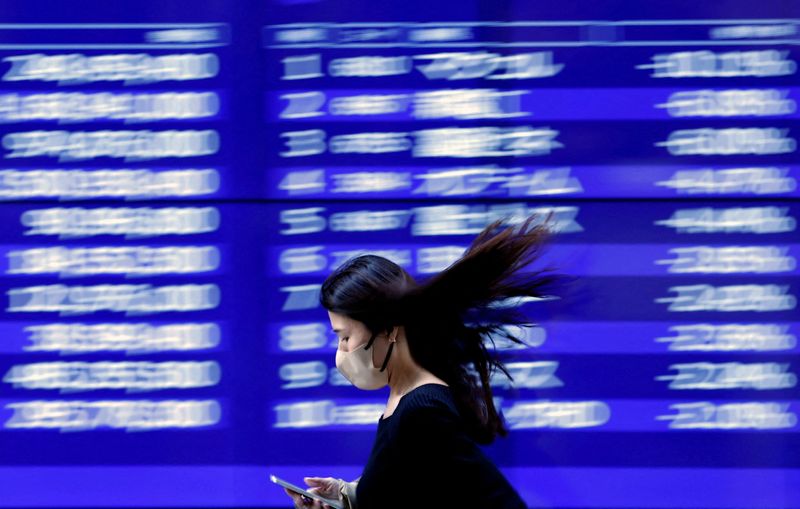Gold surges and euro sags as broader war risks rise

By Tom Westbrook
SINGAPORE (Reuters) – Gold was headed for its largest weekly gain in nearly eight months on Friday and the euro hovered at a 13-month low as Russia lowered its threshold for using nuclear weapons and fired a hypersonic ballistic missile at Ukraine.
The risk of escalation also sent European gas prices to a one-year high and pushed investors towards safe havens, underpinning German debt and putting the Swiss franc on course for its first weekly rise in two months.
In Asia on Friday, chipmakers led stocks a little higher after Nvidia touched a record high in U.S. trade on solid earnings, with shares in Taiwan and South Korea up more than 1% and the Nikkei gaining 0.8%.
Gold was steady at $2,677 an ounce and up more than 4.5% for the week so far while bitcoin, stood on the brink of breaking above $100,000 for the first time.
Assets linked to Adani Group companies remained under pressure, with dollar bonds nursing losses following chairman Gautam Adani’s indictment for fraud by U.S. prosecutors.
Russia on Tuesday lowered its threshold for using nuclear weapons and overnight responded to the U.S. and UK allowing Kyiv to strike Russian territory with western weapons by firing a hypersonic intermediate-range missile at Ukraine’s Dnipro.
“Those weapons typically carry nuclear warheads,” said analysts at ANZ Bank, noting the attack sent oil prices higher.
“The exchange indicates the war has entered a new phase, raising concerns around disruptions to supply.”
Brent crude futures are up nearly 4.5% on the week and edged up to touch a two-week high of $74.44 a barrel in Asia trade.
The euro has been friendless and down for seven of the past eight weeks as Europe faces U.S. tariffs, slowing growth, the collapse of Germany’s government and strains in France’s government over its 2025 budget.
“There doesn’t seem to be anything on the plus side of the euro ledger just at the moment,” said National Australia Bank’s head of FX research, Ray Attrill.
At $1.0469 the common currency is close to breaking support at last year’s low of $1.0448. European stocks are also headed for a fifth weekly drop in a row, while world stocks are up 1% this week.
The dollar index eyed a weekly gain of 0.4% and traded at 107.05. S&P 500 futures were flat. Benchmark 10-year Treasury yields held at 4.432%, more or less steady on the week.
Markets imply about a 58% chance of a Fed cut, down from 83% a week earlier.
Data in Japan showed core inflation held above the central bank’s 2% target in October, keeping pressure for a rate rise. Markets are pricing about a 57% chance of a 25 basis point Bank of Japan rate hike in December and the prospect has injected some volatility and even support for the yen.
The yen, down 4% this quarter, was trading firmer at 154.38 per dollar in morning trade.
“Together with speculation about (finance ministry) intervention, I think selling on upticks on dollar/yen is quite decent,” said Keita Matsumoto, head of financial institution sales and solutions at Citigroup Global Markets Japan in Tokyo.
“Our investor clients and corporate clients are rather sellers of dollar/yen close to 155.”
(Editing by Shri Navaratnam)